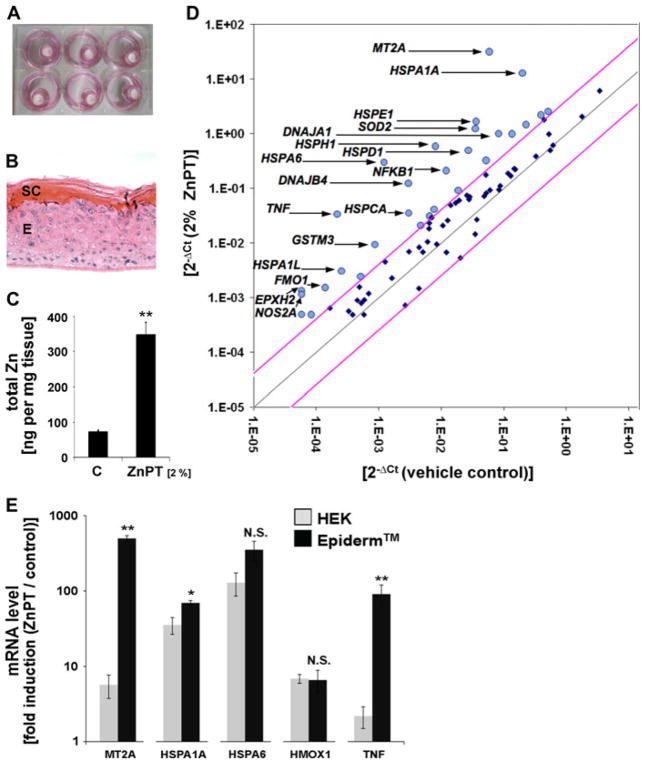Fig. 4.
ICP-MS and gene expression array analysis of ZnPT-treated human reconstructed epidermis (EpiDerm™). a Human reconstructed epidermis (EpiDerm™; 9 mm insert diameter) was treated topically and maintained in 6 well format. b H&E stained cross-section of formalin-fixed and paraffin-embedded terminally differentiated EpiDerm™ (SC stratum corneum, E viable epidermal keratinocytes). c ICP-MS analysis of zinc accumulation in EpiDerm™ in response to topical treatment {ZnPT [2% (w/w) in Vanicream™, 90 mg total] or Vanicream™ only; 3 h exposure time; mean + SD}. d RT2 Human Stress and Toxicity Pathway Finder™ PCR Expression Array analysis of differential gene expression in EpiDerm™ exposed to ZnPT [2% (w/w) in Vanicream™, 90 mg total; 24 h exposure) or Vanicream™ only. Changes in cycle threshold (Ct) for genes of interest relative to GAPDH for vehicle control (x-axis) versus ZnPT-treated (y-axis) EpiDerm™ are displayed as scatter blot. Upper and lower lines represent the cut-off indicating four fold up- or down-regulated expression, respectively. The arrows specify the genes with statistically significant upregulation greater than ten-fold (n = 3; P < 0.05). ZnPT-induced up- or downregulation of expression by at least twofold is summarized in Table 1. e Comparison of selected gene expression changes observed in ZnPT-exposed cultured NHEKs [500 nM, 24 h; values taken from Lamore et al. (2010a)] versus ZnPT-exposed EpiDerm™ (as specified in panel d)

